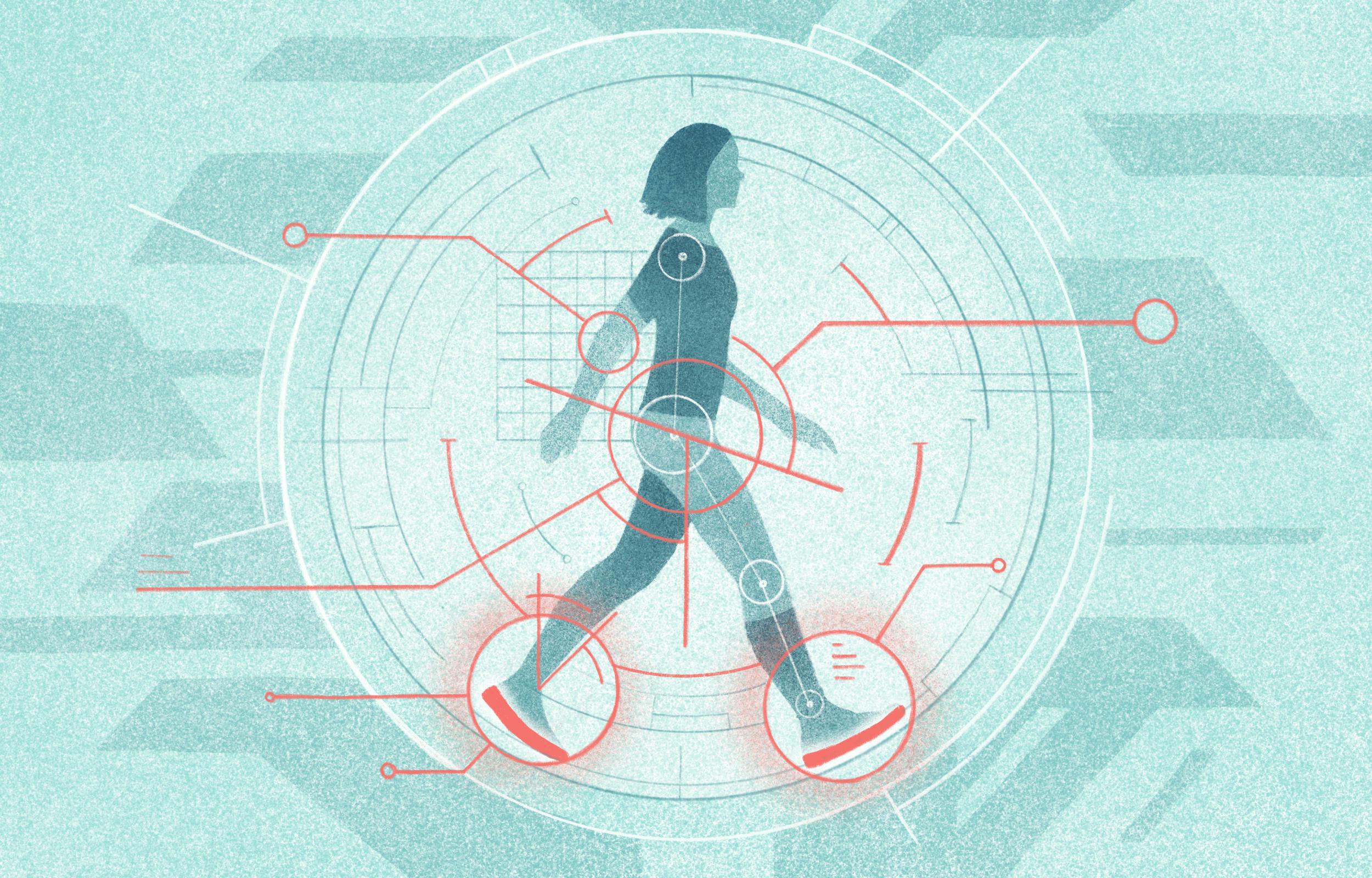Your shoe insoles may be getting smarter
Podiatrists already know this: Your feet can tell a lot about your overall health.
If you’ve heard of gait analysis—the study of how people walk and move—you most likely associate it with athletic performance, especially running.
But as gait analysis tools have evolved with the help of machine learning algorithms, this data has become more valuable as a metric of other aspects of health, including conditions like diabetes and neurodegenerative diseases.

The latest: Researchers from The Ohio State University have developed a new smart insole system that provides real-time insights into how people walk—and what that indicates about their health.
- The system puts gait analysis pressure sensors right in a user’s shoes and is fueled by a system of solar panels on the tops of the shoes.
- The data is transmitted via Bluetooth to a smartphone for quick on-the-go analysis.
- While it’s not the first such attempt at a wearable insole-based gait analysis system, this technology surpasses previous designs in its self-sustaining nature and consistent performance.
What’s in a step?: It may not seem obvious—especially if you look at the ways humans have learned to synchronize their movements in dance and military marching—but your footsteps are as unique of a biometric as your fingerprint.
- The biomechanics of your gait thus carries a lot of information about your body that is useful beyond getting you from place to place.
- Maladies that can subtly affect your gait—and thus be picked up by the foot sensors—include:
- metabolic conditions like diabetes
- musculoskeletal conditions like plantar fasciitis
- neurological conditions like Parkinson’s disease
- However, unlike a fingerprint, the information gait analysis works from is not static like a fingerprint. A reading taken in a clinic may not represent what your gait is like in the real world on a different day, under different conditions.
- Think of it like an EKG. While a cardiologist can get a lot of information from reading your heart rate on an office monitor, your portable EKG on your smartwatch can pick up something that wouldn’t necessarily happen during a 20-minute office visit. That’s why a wearable sensor can give researchers and clinicians a more complete picture of how you walk or run.
Not just for athletes: The design and potential applications of this sensor system represent the trend of the fitness, wellness, and medical technology fields overlapping more and more.
- We’ve seen it in the evolution of the smartwatch, which in the past decade bridged the technology world’s computer-in-a-watch product with the fitness enthusiasts’ pedometer and the doctors’ EKG.
- And we’re seeing it now with the rise of continuous glucose monitors—previously solely a diabetes product—being marketed to people without the disease, as a tool for quantified wellness tracking.
- Whether we’re trying to get more steps in, rehab a condition affecting our movement, or running our tenth marathon, we expect to see the way we monitor all the minute functions of our bodies to continue evolving, largely through the availability of exciting products like these.